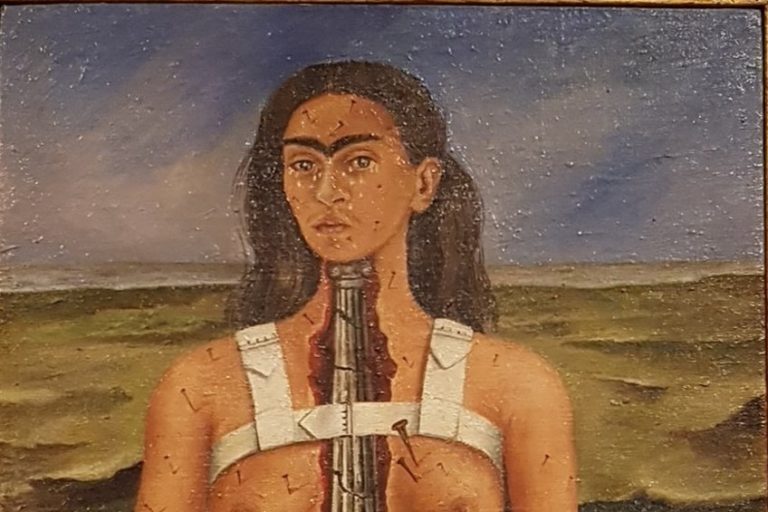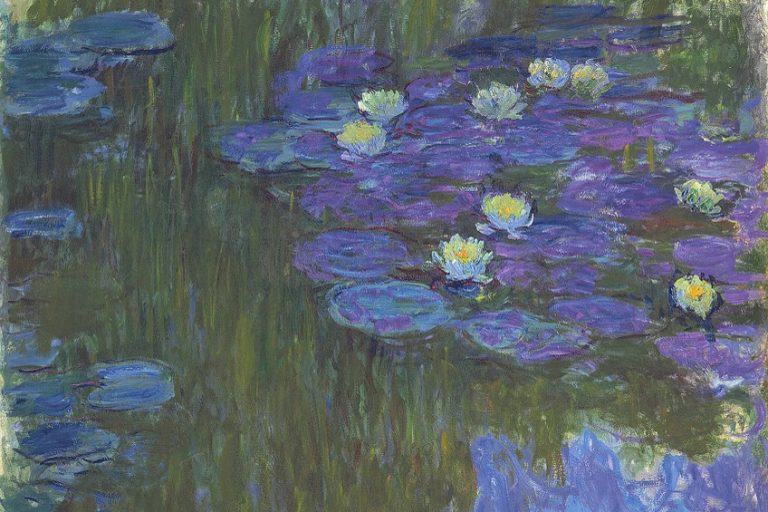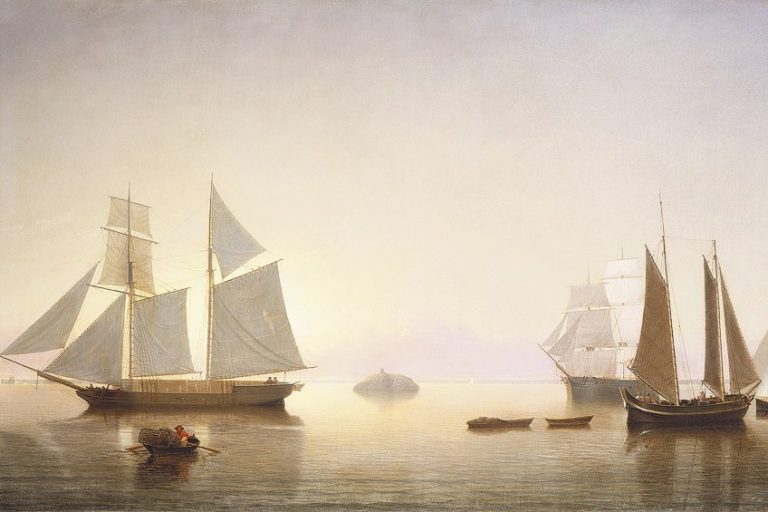“Death and Life” by Gustav Klimt – A Death and Life Analysis
Delicate women and one man appear in dazes and slumber amidst patterned patches and florals. A seemingly content and happy bunch, but they are watched by an eager figure appearing at the ready to break them up at any moment. This is Death and Life (c. 1910 – 1915) by Gustav Klimt, the painting this article below will discuss. Let us go knock on Death’s door and discover it further.
Artist Abstract: Who Was Gustav Klimt?
Gustav Klimt was born on July 14, 1862, in Baumgarten in Vienna, Austria, and died on February 6, 1918, in Vienna and was buried at the Hietzing Cemetery. He was artistic from a young age and studied at the University of Applied Arts Vienna, notably architectural painting.
He was one of the pioneers of The Vienna Secession, which was founded in 1897 and paved the way for more Modern art.
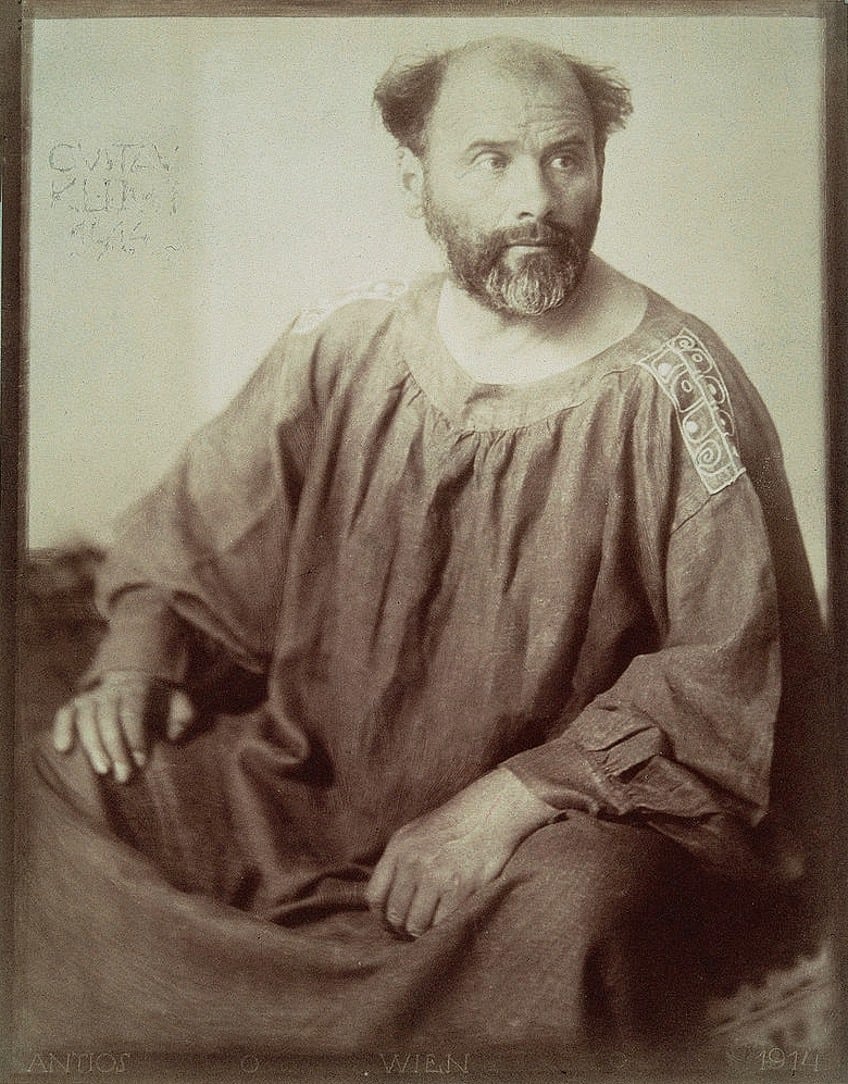
He was unconventional in his lifestyle and approach to art and was known for his decorative and gilded compositions that often featured women as his subject matter. Some of his best-known artworks include The Kiss (1907 – 1908) and Adele Bloch-Bauer I (1907).
Death and Life (c.1910 – 1915) by Gustav Klimt in Context
| Artist | Gustav Klimt |
| Date Painted | c. 1910 – 1915 |
| Medium | Oil on canvas |
| Genre | Allegorical painting |
| Period/Movement | Art Nouveau |
| Dimensions (cm) | 178 x 198 |
| Series/Versions | N/A |
| Where Is It Housed? | Leopold Museum, Vienna, Austria |
| What It Is Worth | The price is uncertain. |
In the article below you will learn more about the oil on canvas Death and Life by Gustav Klimt, notably the time period when he painted and exhibited it, including its symbolic meaning, as the title so aptly suggests. This article will also discuss a visual description of the artwork, and how the art elements compose it.
Contextual Analysis: A Brief Socio-Historical Overview
Gustav Klimt painted the original Death and Life in 1910 but reportedly started with sketches of the subject matter in 1908. He came back to it in 1915 and made various amendments to the painting. This was just several years before his death in 1918. Death and Life by Gustav Klimt is a visual timeline of what every human being will eventually experience, which is death.
Although it might sound morbid to think about it, let alone paint it, Klimt reportedly depicted a more positive idea, one filled with life that appears to continue even in the watchful skeletal face of death.
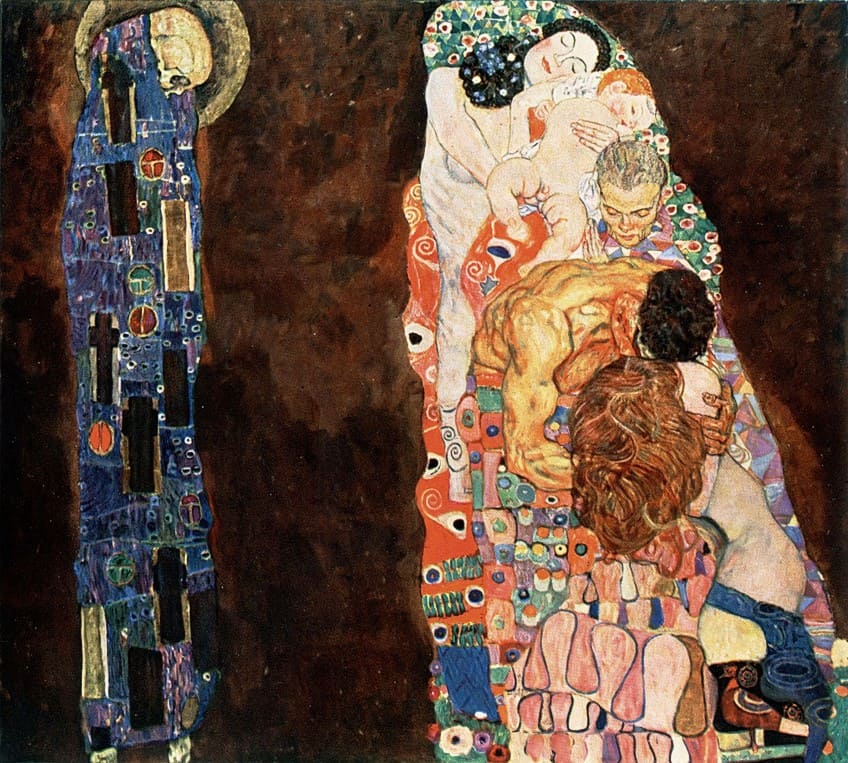
The subject matter is also reportedly based on ideas of how Death was portrayed during the Middle Ages, notably the concept termed “Dance of Death”, which is a visual reminder of mortality. This was also termed the “Danse Macabre”. Klimt won first prize for Death and Life when he exhibited it in Rome at the International Exhibition of Art in 1911.
The painting was subsequently exhibited on numerous occasions throughout European countries.
Formal Analysis: A Brief Compositional Overview
In the Death and Life analysis below a visual description will provide more detail about the subject matter and what Klimt incorporated into his composition. It will further discuss how the main elements of art like color, texture, line, shape, form, and space are arranged and how the principles of art/design come into play.
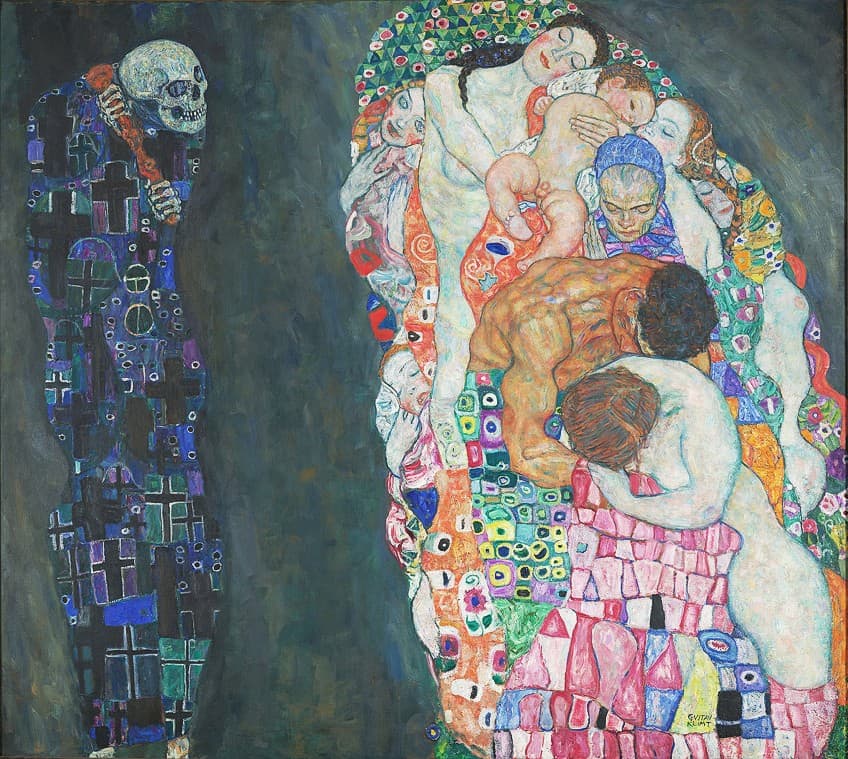
Subject Matter: Visual Description
Death and Life by Gustav Klimt depicted two groups of distinguishable figures against a gray background. An interesting fact about this artwork is that Klimt initially painted the background gold, which was changed to gray in 1915. On the left side is only one figure, identifiable as Death. On the right side are around nine visible nude figures.
They are arranged in what appears to be a patchwork blanketed/quilted cocoon-like shape with floral patterns.
The tall, seemingly hunching, figure of death appears fully enrobed. His robe is a dark blue color and patterned with what appear to be patches that are square and others that are rounder. Most have black crosses on each in different sizes. There are also smaller circular shapes along with other circular symbols on the robe. Most of the crosses and shapes have white outlines.
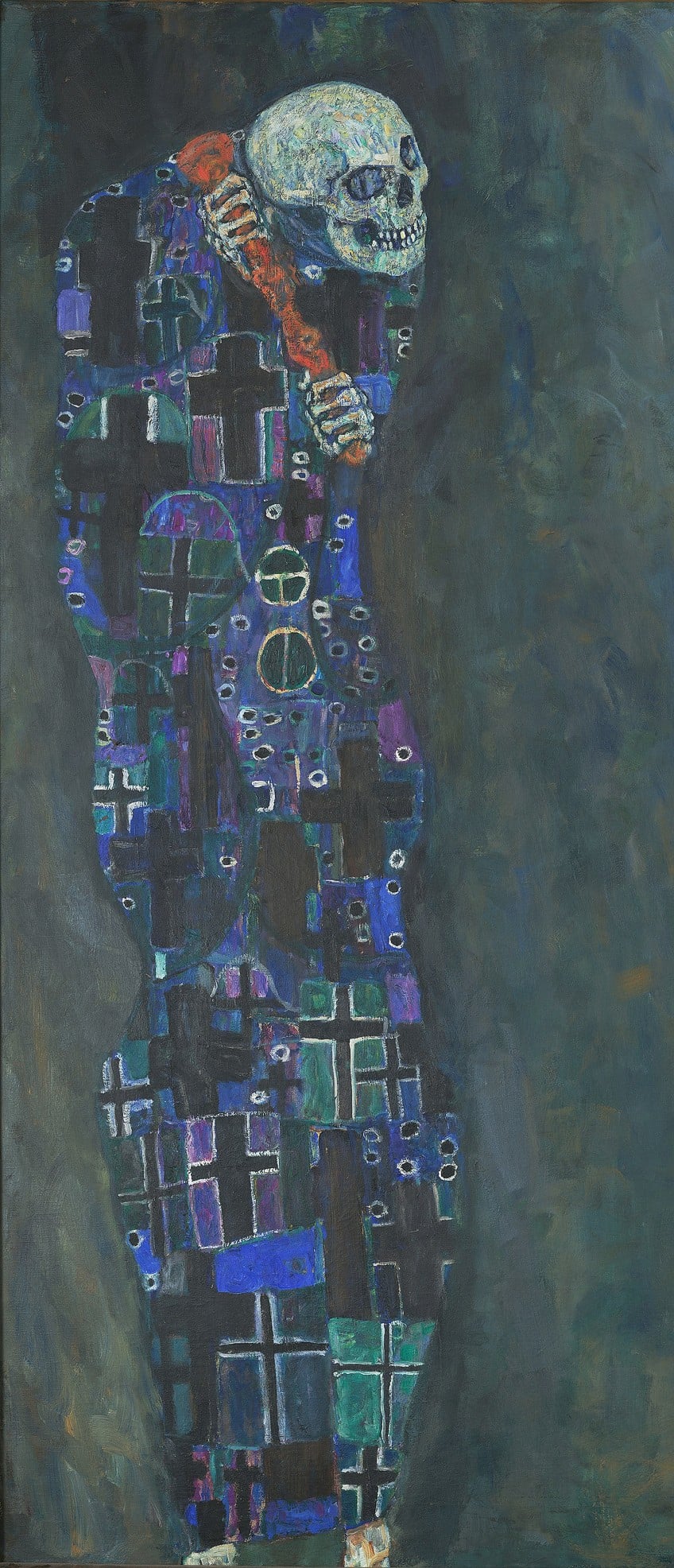
Only Death’s head, two hands, and feet are visible outside his robe, and in the form of a skeleton. He is fervently clutching a short brown club with his phalanges, holding it up high, its upper end is level with the top of his skull as if he is almost ready to swing it. His facial expression, although that of a skull appears animated and eager as his focus is on the figures to his right. It becomes clear, with help from the title of the artwork, what the figures to the right symbolize, which is life. They appear unbeknownst to the lurking figure to their left. The left party appears to consist of eight women and one man.
The central figures in the cocoon-like shape, starting from the bottom, are a woman and a man, possibly a couple. They appear to be in an embrace and both their heads are bowed; the man is resting his forehead on the woman’s upper back, and she is touching his right arm with her left hand.
Their faces are not clearly visible. Furthermore, the man has more of a bronzed skin tone compared to the woman, who is fairer. Just above the man is the face of an older woman, she is also bowed, and her eyes appear closed. She appears to have a bluish headdress on and only her head is visible, she could be covered by a robe or the blanket-like material present in the cocoon-like shape.

Behind the old woman, on the upper part, is a woman who appears to be holding a baby, which suggests a mother and child. The woman appears in a state of bliss as she holds the baby, and her head is rested against a soft piece of material that the baby appears to be lying on. She has long brown hair and most of her body is also visible along the left side of the cocoon-like shape. The other figures surround these central figures, and they are all fair-skinned. The two on the right appear with closed eyes as if they are sleeping, the one on the lower right also has closed eyes, while the woman on the upper right has open eyes.
Color
There are a variety of colors in Death and Life by Gustav Klimt with darker blues and neutral blacks and white. Lighter pinks, greens, oranges, reds, and purples are to the right. The left side appears cooler in color temperatures and the right is warmer.
The gray background also creates a darker space, which sets the scene.
Texture
There are two types of texture that Gustav Klimt utilized in the Death and Life painting, namely, the tactile and visible texture from the applied brushstrokes. Implied texture is evident in the figures, for example, the modeling of the male figure and his muscular physique or the softer folds of the blanket/quilt surrounding the figures to the right.
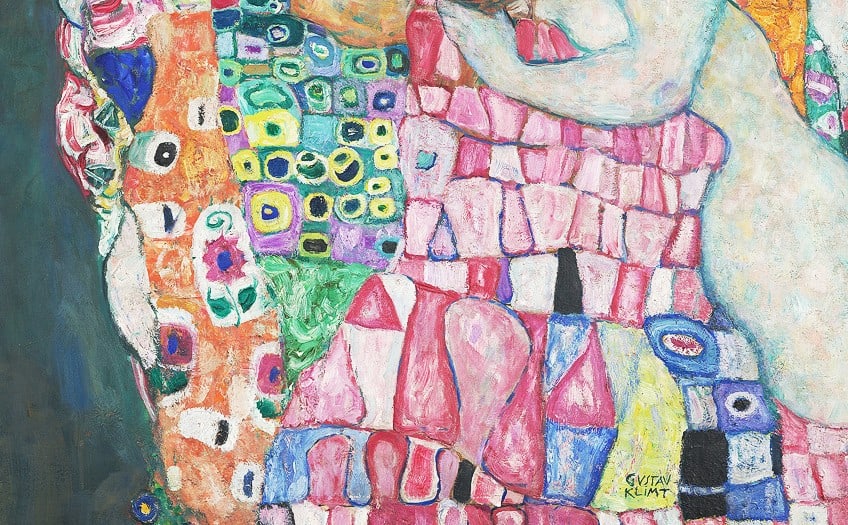
Line
Most of the lines in the Death and Life painting are irregular, curved, and curled which creates a sense of free flow along the composition. For example, notice the visible outlines around some of the crosses on Death’s robe or the curled lines that create the curving shapes of the figures’ bodies.
Shape and Form
There is an interplay of shapes and forms in Death and Life, from organic (naturalistic), which is evident specifically in the curvaceous human forms of the figures. There are also geometric shapes evident as the patterns on Death’s robe and the blanket/quilt around the figures to the right. For example, notice the green triangular patterns along the upper section of the figures to the right side, the irregular rectangular shapes at the bottom end, or the more organic form of a flower at the bottom left.
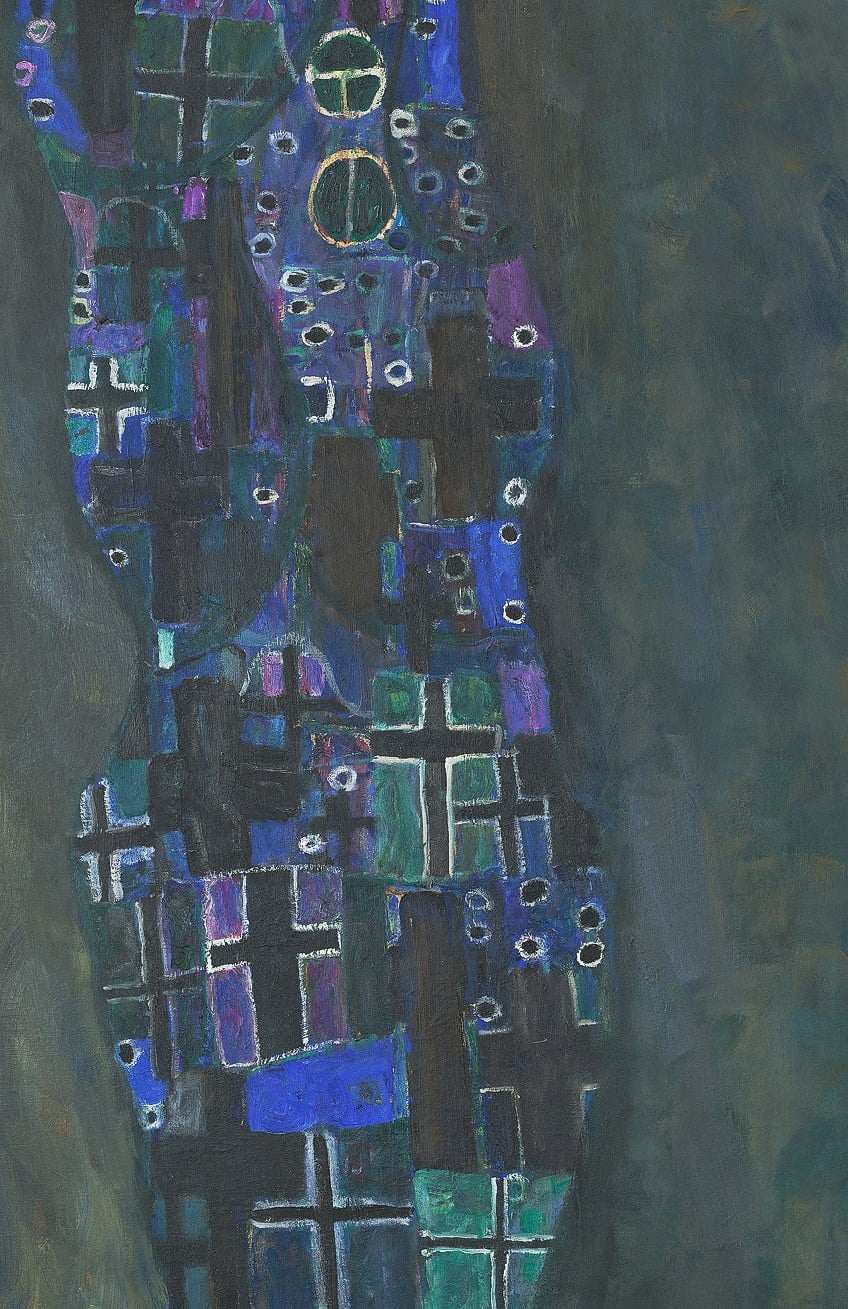
Space
Gustav Klimt’s pictorial space appears flat in some areas, for example, the similar dark colors of Death and the background and the appearance of the group to the right, which appears seemingly superimposed onto the background.
Death Decorated
In November 2022 Death and Life was the subject of vandalism in protest for climate change. The group that called themselves “Last Generation”, or the “Letzte Generation”, reportedly threw black liquid onto the painting’s glass covering and one of the members glued themselves to the glass cover. The painting was reportedly unscathed by the incident.
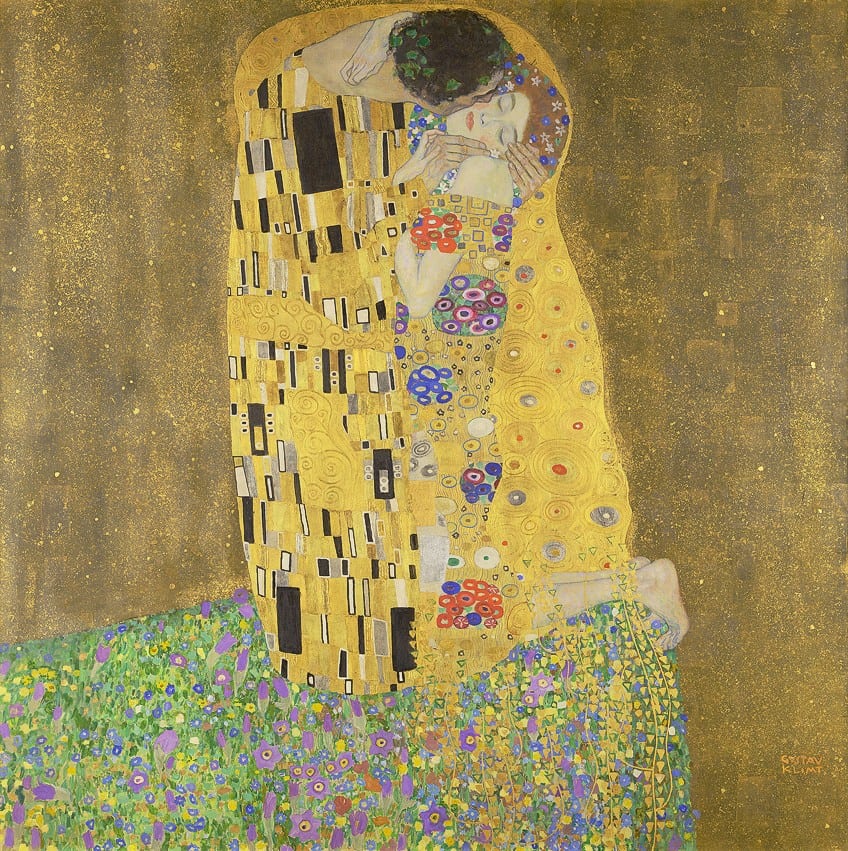
The “Death and Life” analysis explored one of Gustav Klimt’s later paintings of his life and artistic oeuvre; he later died in February 1918. It is one of many works exemplifying the artist’s skills and proclivities, from the love of women to decorative elements that make any subject matter, even Death, tasteful.
Frequently Asked Questions
Who Painted Death and Life?
The Austrian painter, Gustav Klimt, painted the oil on canvas Death and Life between 1910 and 1915, which includes his amendments to it in 1915.
Where Is Death and Life by Gustav Klimt Housed?
The oil on canvas by Gustav Klimt titled Death and Life (c. 1910 – 1915) is housed at the Leopold Museum in Vienna, Austria.
What Is the Meaning of Death and Life by Gustav Klimt?
The oil on canvas painting titled Death and Life speaks of mortality, which is further suggested by the title itself. It depicts the figure of death to the left, seemingly standing in waiting and watching life unfold to the right.
Alicia du Plessis is a multidisciplinary writer. She completed her Bachelor of Arts degree, majoring in Art History and Classical Civilization, as well as two Honors, namely, in Art History and Education and Development, at the University of KwaZulu-Natal, South Africa. For her main Honors project in Art History, she explored perceptions of the San Bushmen’s identity and the concept of the “Other”. She has also looked at the use of photography in art and how it has been used to portray people’s lives.
Alicia’s other areas of interest in Art History include the process of writing about Art History and how to analyze paintings. Some of her favorite art movements include Impressionism and German Expressionism. She is yet to complete her Masters in Art History (she would like to do this abroad in Europe) having given it some time to first develop more professional experience with the interest to one day lecture it too.
Alicia has been working for artincontext.com since 2021 as an author and art history expert. She has specialized in painting analysis and is covering most of our painting analysis.
Learn more about Alicia du Plessis and the Art in Context Team.
Cite this Article
Alicia, du Plessis, ““Death and Life” by Gustav Klimt – A Death and Life Analysis.” Art in Context. June 14, 2023. URL: https://artincontext.org/death-and-life-by-gustav-klimt/
du Plessis, A. (2023, 14 June). “Death and Life” by Gustav Klimt – A Death and Life Analysis. Art in Context. https://artincontext.org/death-and-life-by-gustav-klimt/
du Plessis, Alicia. ““Death and Life” by Gustav Klimt – A Death and Life Analysis.” Art in Context, June 14, 2023. https://artincontext.org/death-and-life-by-gustav-klimt/.




